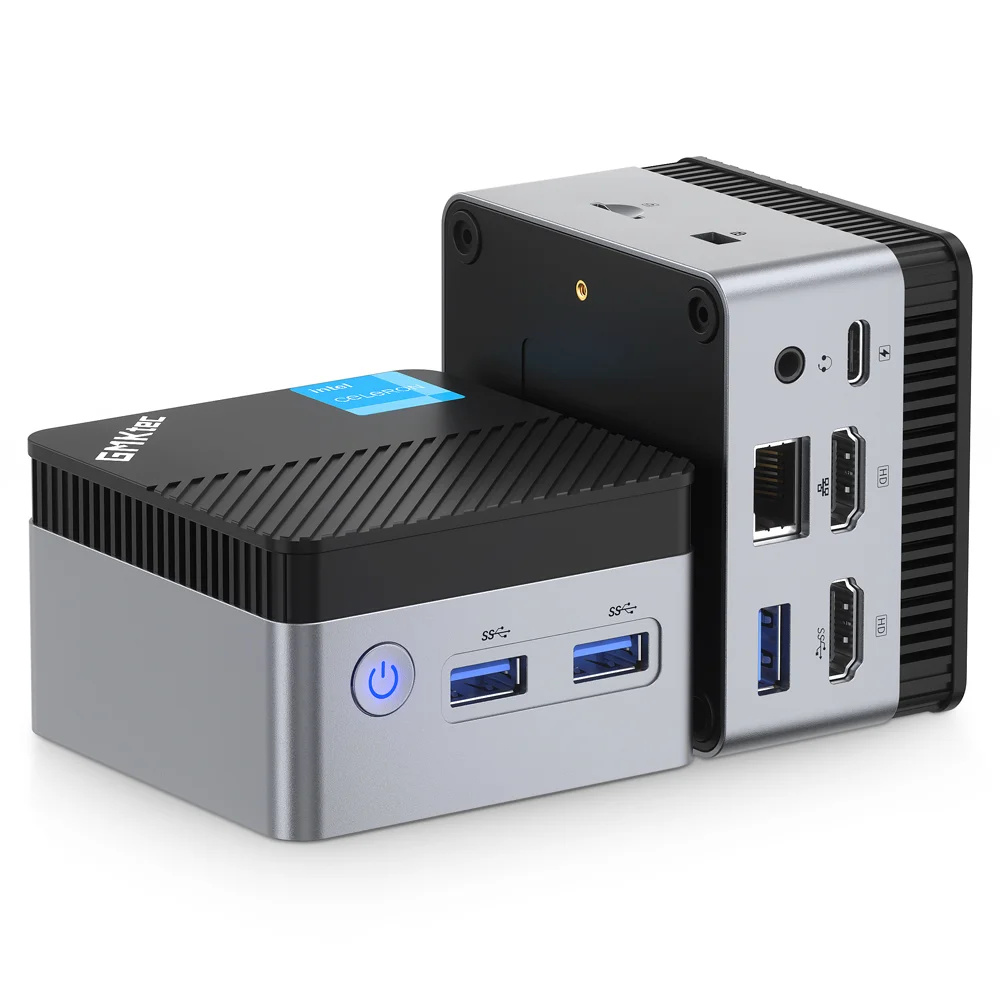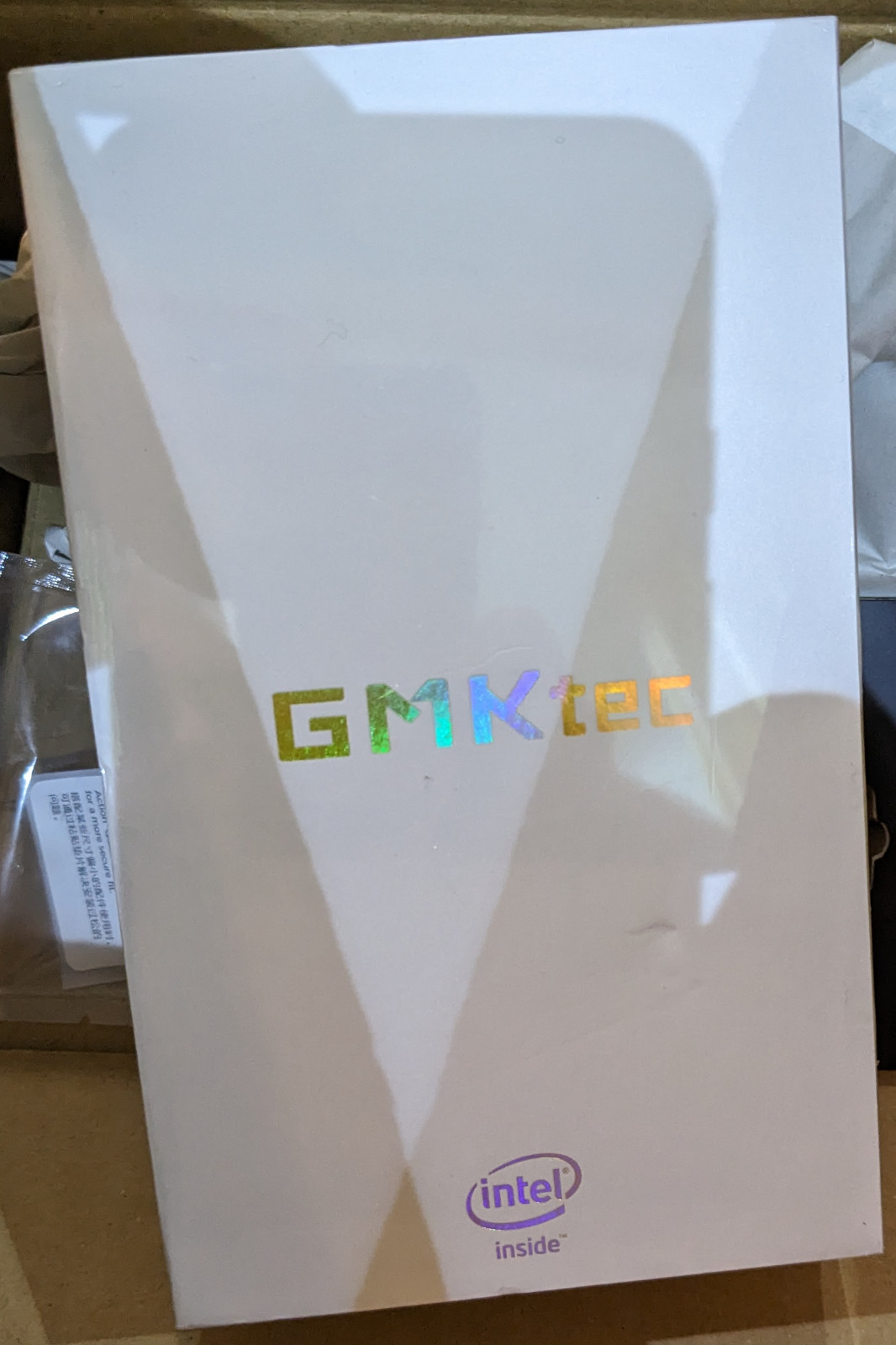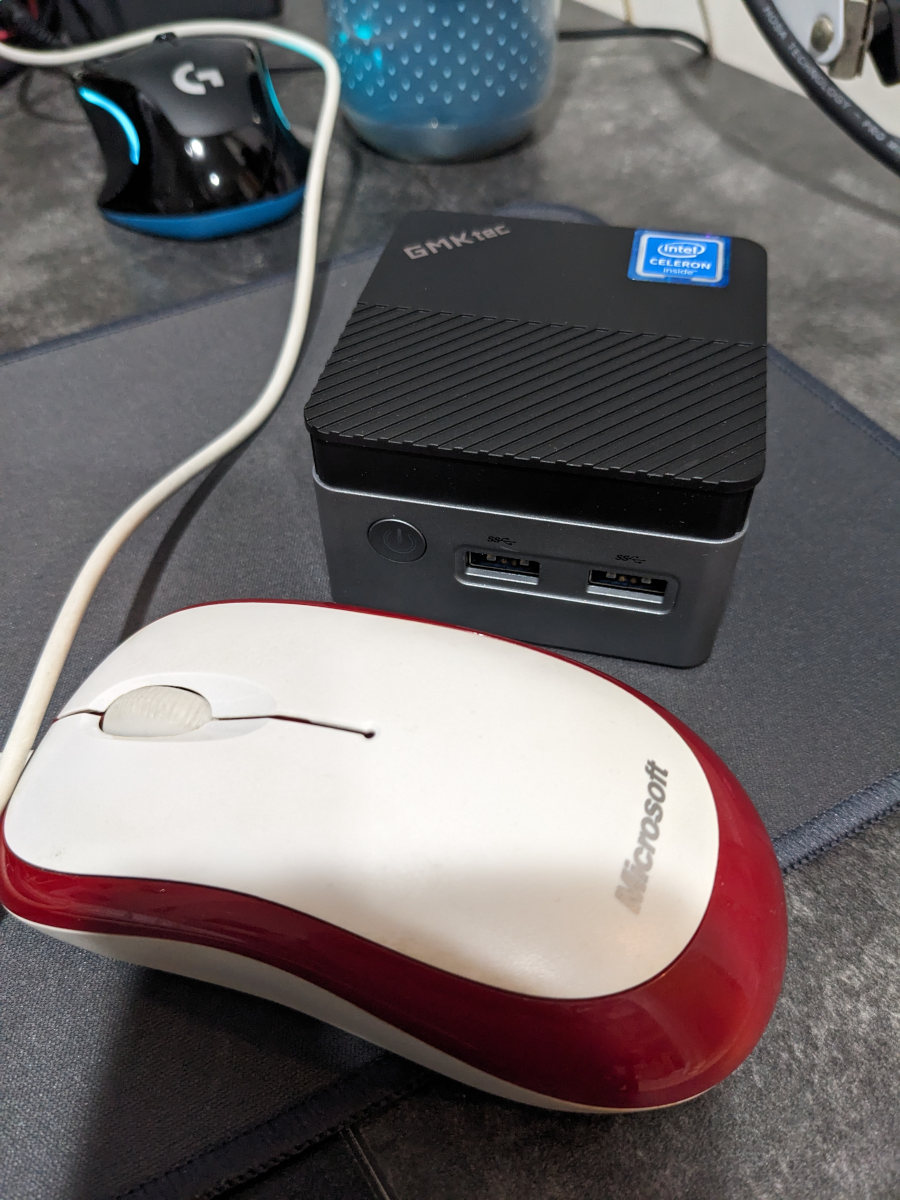A Month with the NucBox5
For a couple of years, some of my in-house functionality was being handled by a couple of Raspberry Pi’s - my old 1B was doing Pi-hole duty, and a 2 was my always-on Syncthing hub. I’d actually had no problem at all with either of these doing these roles, perhaps with the exception that the 1B, whilst fine for DNS sinkhole duties, when doing any work via the web UI, especially searches and analysis and such, was as slow as you’d expect. Syncthing on the Pi2 was fine; the only issue was a concern on these things running from SD cards for the long term.
There was of course two other lesser issues - firstly, that’s two devices to manage, and as they sat on my server shelf it’s two sets of cable and power sockets to look at. Obviously the power draw of the Pis was of little concern - they sipped a few watts most of the time. Sure, I could have implemented automated updating and/or management on those two and that would have saved me a few minutes a month.
Secondly, I had a few electronics projects in mind which I wanted to use them for, and of course the price of Pis and similar boards has been somewhat inflated of late. So what to do?
I needed a box which was powerful enough to run both services on one box (preferrably in Linux), was physically small, relatively future proof, and had a LAN port since I try to do as much as I can over cables as the wifi is a little congested currently. No preference on ARM or x86.
I was looking at Serve The Home, as they often look at small form factor home machines, but they also tend to want the fast n small variety which really wasn’t what I needed. However, I was able to get a list of vendors who supply these machines, to see if there was anything in their ranges which would suit my needs.
I also wanted something I could source locally in Japan even though the manufacturer was very likely to be in China - just makes it easier for figuring out shipping, and getting the right power supply, initially and in the future.
I looked at units from Bee-Link which looked pretty good, but when I looked, couldn’t see something as cheap as I wanted; next I also looked at some models from Minisforum. Both make solid units, and friends who have experienced them said they were indeed worth a look.
I was still looking for something under 20,000JPY though, I didn’t need an i3 or i5 system, and via a couple of reviews of units from those companies, it was mentioned that another company - GMKtec - also made very small form factor machines, so I went to take a look at their site, and then see where I could find one for sale.
As it happens, they sell a box called the NucBox 5. It was due to be replaced since it was wifi5, and was based on the old Jasper Lake N5105 architecture from early 2021, so there were some discounts to be had.
I was interested for sure, and the specifications and price was what I wanted - 17,500yen for 8GB DDR4 RAM and a 256GB SSD … and rated at 10W. That was just what I needed. One sort-of caveat though, that SSD is M2 … SATA M2. This means that a replacement is from a smaller pool of suppliers than the nvme versions. That said, you can get tiny external USB3 Gen2 drives, so if the worst happens, there’s a way out. The RAM can also be replaced, so no issue there hopefully either. Price wise, a recent Pi plus a case and power supply wouldn’t be much less than that I suspect.
I was going to buy it from their site, but there was a sale via their Amazon Japan store so I picked it up there instead. It arrived as promised in a nice small box, with a shiny embossed logo on the front. Inside was literally some small warranty and usage docs, the unit itself (which was even smaller than I would I expected somehow), and a power supply.
What’s nice is that it requires a normal USB C connector for power - no proprietary or unusual plug types - and comes with a 36W (3A, 12V) unit! Another minor nicety which I hadn’t thought about is the fact that all the cables go into one side of the box, whereas the Pis tend to like their cables from multiple sides, so on the whole, the server shelf looked a lot neater with a tidier bit of cable management.
Also, it ships with Windows 11 installed. For some completion, I did try it with Windows 11, and registered it to my Microsoft account (no idea if it’ll install on other hardware - I have no need for it currently). It seemed to run fine - wasn’t notably sluggish, so for a ‘browser and documents’ environment, it was fine. I suspect gaming would be limited. It does have some hardware media and encode/decode abilities so just watching films would be fine and being a media player, which seems like a good plan all told.
Honestly, I was actually quite impressed how well Windows 11 ran, but it was not long for the SSD as my plan was to install a basic Debian 12 base, with maybe XFCE as an environment, but still boot to CLI. Given the SSD and memory were ’no brand’, the OS had no issues with them, and of course Intel kit - especially the wifi chipset - were seen straight off, but I wasn’t too worried about that because this will run from ethernet as I mentioned.
Installation of PiHole and Syncthing were pretty simple too as I was moving most of the config from the old boxes, and then it was just a few minutes of making sure the firewall was working as expected, and that was it!
Current Status
It’s been working for just over a month by this point, and it’s been great. For serving DNS, the performance is as it was before as far as I can tell, but that web interface and searches - even updates - are far, far faster than they were on the Pi. Syncthing also seems to be a bit quicker on it’s own UI and some of the larger syncs.
Overall then I’m really pleased, and I’m hoping the reliability is up there too given I’m not stressing it too much. I like Pis for this kind of work, but I think this was a good move to go with a small x86 unit for a change, and it’s something I’ll keep in mind in the future if I have a similar need, especially for audio/visual player.


